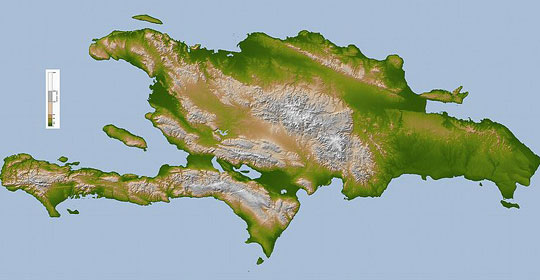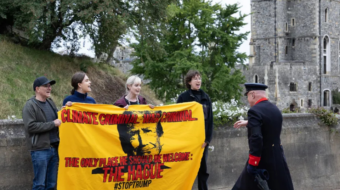
The dispute about the status of descendants of Haitian immigrants in the Dominican Republic is now the subject of negotiations hosted by Venezuelan President Nicolas Maduro. However, the basic problem is one of the poverty of both nations, which has been exacerbated over two centuries by the actions of the United States, France and other wealthy countries.
In September, the Supreme Court of the Dominican Republic ruled that Dominican-born children and even grandchildren of undocumented immigrants have no right to Dominican citizenship. This was based on a 2010 law which denies such citizenship to the descendants of undocumented immigrants going back to 1929. Affected people got redefined as being “in transit, even if they had never left the Dominican Republic. Suddenly at least 200,000 people, overwhelmingly of Haitian origin, find themselves unable to exercise the rights of citizens, including access to basic health and education services.
The court’s decision has been met with international indignation. The CARICOM trade group, to which Haiti belongs, has suspended consideration of the Dominican Republic’s membership. In the United States, there are threats of a trade and travel boycott.
Dominican President Danilo Medina has promised to create a mechanism to regularize the status of the Haitian descendants, but details are still lacking. On the left, the court’s decision has been widely denounced, by the Fuerza de la Revolucion (the Dominican Republic’s communist party) and others.
On the right, Haiti and people of Haitian descent are demonized in racist terms. The same rhetoric that the right wing in the United States uses against undocumented immigrants is employed: Coming to take our jobs, lawbreakers, thieves, invading to take over. Mass deportation is being demanded and a number of Haitian descendants have been forced across the border, with several deaths.
Haiti got its independence From France in 1804, after a bloody war. But it shared the island of Hispaniola with the Spanish colony of Santo Domingo, now the Dominican Republic. Haiti feared that Santo Domingo could be the staging ground for further European invasions, and so invaded it in 1821. At first, many poor Dominicans welcomed this, since the Haitian regime abolished slavery and undertook steps toward land reform. But the welcome wore out, partly because from 1825 on, Haiti was forced at gunpoint to pay a huge indemnity to France for loss of French property (the former slaves). Taxes to pay this indemnity were imposed on the whole island. There were also efforts to suppress the use of Spanish, and other irritations. So in 1844, Dominicans declared independence from Haiti. Haiti made several attempts to recapture the Dominican Republic, which in turn found itself back under Spanish rule for a while- supposedly to protect the country from Haitian aggression.
The United States occupied Haiti from 1915 to 1934 and the Dominican Republic from 1916 to 1924. The U.S. occupation, which had the purpose of advancing U.S. business interests (especially in sugar production in the Dominican Republic) was brutal and deeply resented. A rebellion was led by Charlemagne Peralte, an army officer born in Haiti but of Afro-Dominican ancestry . Peralte, who was murdered by two U.S. noncommissioned officers in 1919, became a national hero of both countries. Had he triumphed, might he not have been a force for unity?
In the 1920s and 30s, many Haitian migrants were brought into the Dominican Republic as cheap labor for the expanding sugar industry. Though this brought great profits to landowners (many U.S. citizens), it also gave the Dominican right another pretext to agitate against the Haitian “menace”.
In 1937, the U.S. backed right wing Dominican dictator, Rafael Trujillo, ordered the massacre of up to 20,000 of Haitian migrants. The reactionary Haitian government of President Stenio Vincent meekly accepted a small compensation, and the U.S. continued to back Trujillo and right wing despots in both countries.
In the early 1990s President Joaquin Balaguer, Trujillo’s protégé and a particularly virulent anti-Haitian ideologue, carried out anti-Haitian expulsions, partly in reaction to the growing movement behind radical Haitian priest Jean Bertrande Aristide. When Aristide was overthrown by the military, Balaguer connived to undermine international sanctions.
Today the Dominican Republic has a population of nine and a half million and a per capita gross domestic product of $9800 (PPP). Haiti has a population of 10 million and a per capita gross domestic product of only $1,300, the poorest country in the hemisphere-but the Dominican Republic is poor too. The 2010 earthquake destroyed the livelihoods of thousands of Haitians (and most of the promised aid never materialized), but so did the dumping of U.S. agricultural products in Haiti beginning in the 1990s, foisted on Haitian President Aristide by the Clinton administration as a condition for helping to restore his presidency. Under these conditions, Haitian emigration is inevitable, but the United States does not accept poor Haitians, so they go to the Dominican Republic.
Neither country can rely on the United States, France, or other wealthy nations to give them disinterested help, so reconciliation is essential for them to get out of their present straights.
Photo: Topography map of Hispaniola, with Dominican Republic on the right and Haiti on the left. Wikipedia (CC)
Correction: In a previous version of this story, the caption identifying Haiti and the Dominican Republic was incorrect. Haiti is located on the left in this image of the island of Hispaniola and not the right as previously stated. Thank you to our reader who brought this to our attention.










